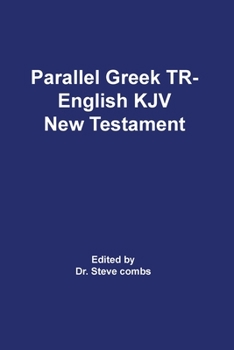Parallel Greek Received Text and King James Version The New Testament
Select Format
Select Condition 
Book Overview
The Greek New Testament is the 1881 printing of the d104us Receptus edited by Frederick H. A. Scrivener, a well-respected late nineteenth century scholar. The d104us Receptus (TR), also called the Received d104, is a printed Greek New Testament that is based on the vast majority of ancient hand-written New Testament manuscripts. This massive quantity of manuscripts is called the Traditional or Byzantine d104. The King James Version New Testament was translated from the Received d104. The TR was first published in 1516.
This volume is similar to interlinears, in that it compares the Greek and English. However, it differs with many interlinears in that it does not include a separate "literal" translation. Interlinears often include a new translation or a so-called "literal" translation. The implication is that the "literal" translation is more correct than the popular translation (such as the KJV), because it is "literal." However, literal does not always mean "literal." Most Greek words can be translated in various ways, so the word chosen by the translator as the literal translation may actually not be the best word in the context.
The KJV is a translation that has stood the dual tests of time and God's scrutiny. For over four hundred years, God has placed His stamp of approval on it. He has used the KJV and the TR for every great movement of world-wide evangelism since 1611. Even today, with all the new translations and the interlinears, the KJV is still a worldwide best seller every year.
Related Subjects
Bible Bibles Biblical Christian Christian Books & Bibles Christianity Foreign Language Foreign Language Dictionaries & Thesauruses Foreign Language Fiction Foreign Language Learning Foreign Language Study Foreign Language Study & Reference Foreign Languages Religion Religion & Spirituality




